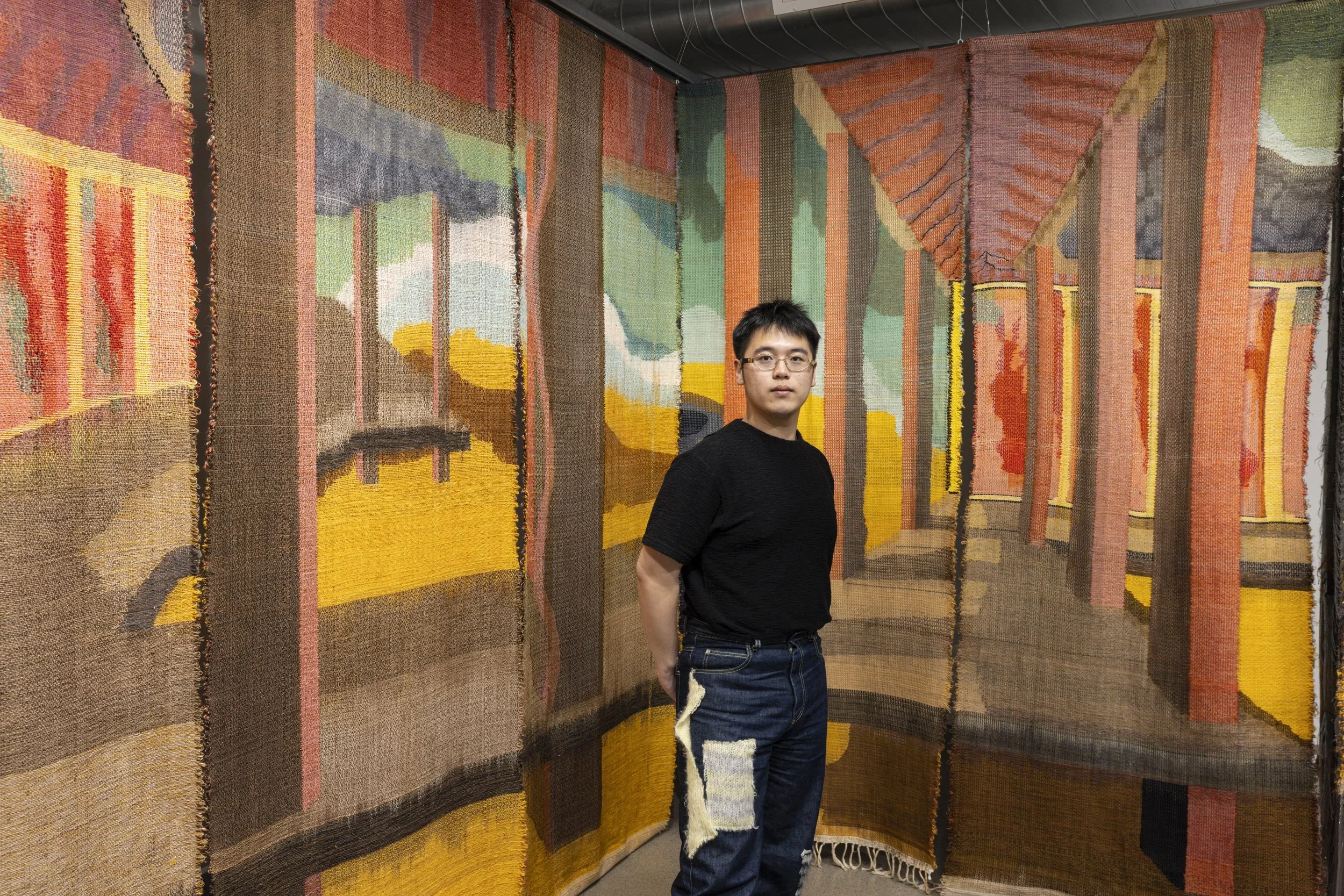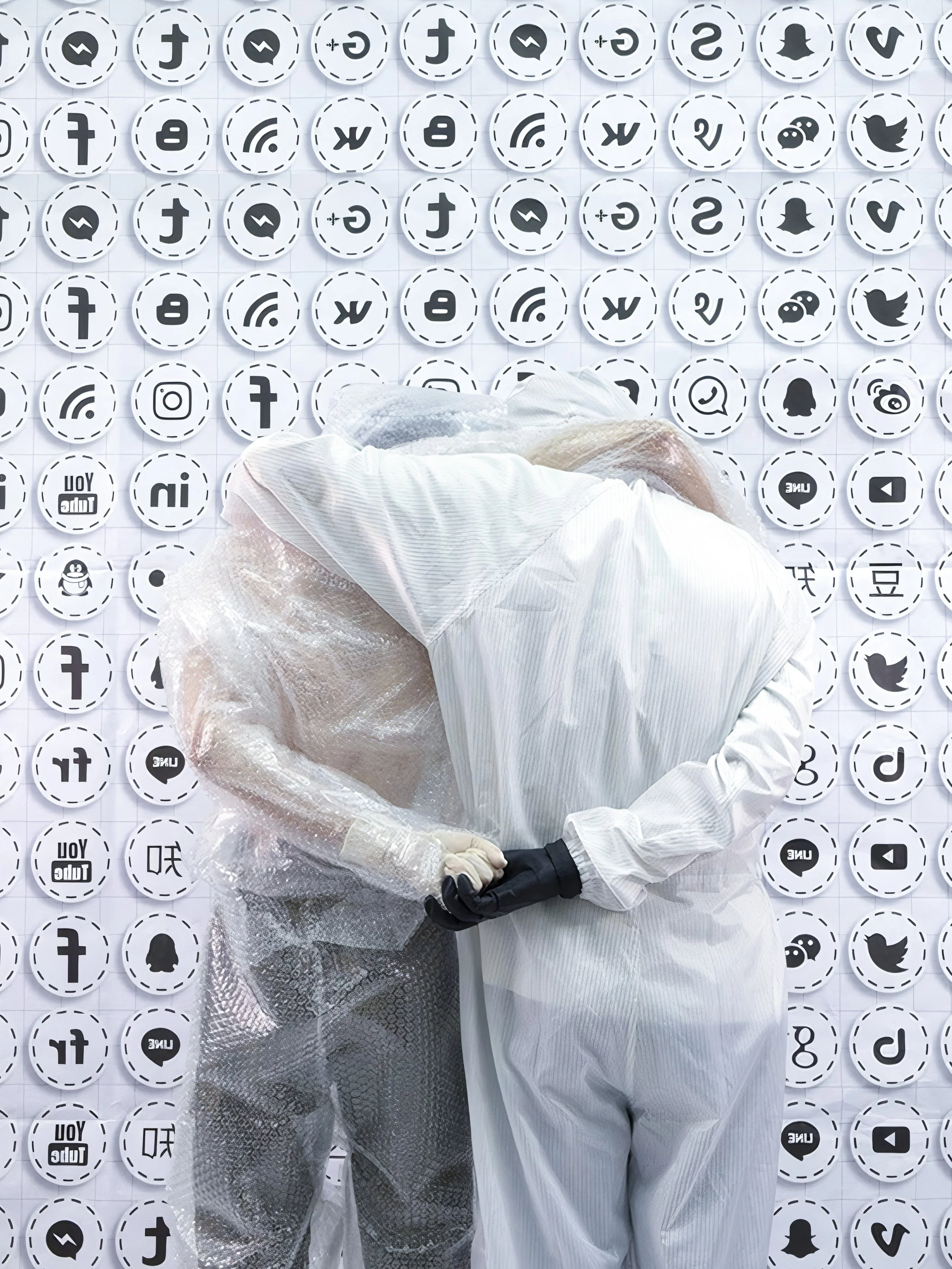10 Questions with Kevin Costello
Born in Kingston, NY, in 1964, Kevin Costello completed a Bachelor of Fine Arts in 1988. He has exhibited both nationally and internationally. Costello has won several major art prizes, including the third prize at the Fortunoff International Silver Competition. He is a New York Foundation for the Arts Fellow and currently works and lives in New York State. Complexity and strength, with vulnerability and hopelessness, Costello’s recent works seek to expose a delicate coexistence between a sense of calm and structured safety and the underlying gravity of the unpredictable tension that now pulls at us. The play of line, structure, and pattern at the cliffs edge.
Kevin Costello - Portrait
ARTIST STATEMENT
Art is the basis of a culture and defines a civilization. Throughout history art has been intimately intertwined with the sciences. From anatomy and geometry to engineering, physics, and chemistry, artists and scientists have spoken the same language for millennia. It is how they process and approach solving problems by always asking questions. The repetition of lines and patterns is an integral part of my work. I look at lines everywhere, and the negative space in-between can hold more weight than the structure that surrounds them. Bridges, architecture, trees, fabrics, these inexhaustible sources of inspiration feed me. What is embraced in the negative space? Is it the past, dreams, or regrets? What is next? What is coming? I am intrigued by the stories in the spaces between the lines.
There is an inherently treasured quality to the utilitarian object. Throughout time, humans kept these objects close to them. I have been concentrating on the vessel form, in particular, the plate form. Historically, it is a vehicle for food and nutrients. I see the plate form as a symbol of family, home, caring, and warmth. I use it as an emotional metaphor to convey the idea that there are things below the surface that everyone cannot see, not even ourselves. With every new view, the negative space changes, and a new perspective is seen. What seems strong may be weak. What seems weak may be strong. It is how we look at our world that defines our lives.
Rogue Horizontal, Bronze, Steel, 25 x 14 x 5 ft, 2022 © Kevin Costello
INTERVIEW
Let's talk about yourself first. Why are you an artist and how did you become one?
This is a funny question. Why is anyone an artist? I don't think one has a choice. It is in you. I knew from a very young age that I saw things differently from others. I have always found that I have a need to express myself through art. After not being a practicing artist for so many years, the pain was too great to bear not to let that person out again. That is why I am an artist now.
You started as a painter. What inspired you to move to your current practice as a sculptor?
I've always loved drawing, painting, and creating. As a painter, one expresses, for the most part, through two dimensions. For me, there was always a sense of impatience and longing for something more. While at university, as a painting major, I took a metals class to explore another medium. I was instantly captivated by the processes and the range of where I could go. Meaning, I saw that I needed to be around my work in three dimensions. I wanted the viewer to be able to have total access to the work. Being able to walk around and to touch or be touched by a piece is why I felt impatient, and it completed my process of how I needed to express myself.
How would you define yourself as an artist nowadays? And how has this definition changed over the years?
I am trying to be completely honest with my work. It is the most vulnerable place and the most important for an artist. Whatever we show, say, or do as an artist should come from the purest and most honest position. I cannot respect my art if it is trying too hard or trying to say what people think should be said because the piece needs to be sold. This could mean that the piece may not be seen anywhere. That is fine. In the past, I used to care if anyone saw my work. I had to let go of that mindset. I stopped caring if it was seen. I care more about creating now. It is more fulfilling this way.
Casket Ambient, Concrete, Steel, Ink, 48 x 12 x 6 in, 2022 © Kevin Costello
Why did you choose sculpture specifically? What does it represent for you?
I feel sculpture chose me. Sculpture was the answer to save me from my impatience and frustration with painting and working two-dimensionally. I am also very interested in and fascinated with processes. I feel sometimes, how something is made and who makes it, the tools used are almost more important than the object. I don't feel this way about my work, but it represents the extra level of completion of my work. Of course, the art is the extension of the artist. I don't think I have been moved to tears from a painting, but sculpture has evoked such a response. Sculpture represents a much more tangible and thorough expression for me as an artist.
Tension and balance are two key elements in your work. How did you come up with this idea? What would you like to express?
The juxtaposition of tension with balance and structure has intrigued me for a long time. The idea of a structure that is perceived to be strong and sturdy, balancing or suspended in a precarious position, or the sheathing of a hollow form with a façade of strength creates tension. I want to express that nothing is perfect. Life can be an illusion. We can't see everything, not even in ourselves. Especially now in our world of war and political hellscapes, there is always something abstruse, cryptically, or overtly under us constantly pulling. I want to convey the idea of" Think of the questions to ask and, most importantly, think of what to question".
Living in Repose, Brass, Copper, Earth, 40 x 40 x 43 in, 2022 © Kevin Costello
How has your art evolved over the years? What inspires you to experiment?
After a 30-year-long break from being an artist, I have been compelled to return. The work has always been there. I would think of how to make each piece and all the details of their creation. It would keep me up at night. The stress of not being able to make these pieces that were in me became too much, and I needed to get out. So, I started working in my studio to make up for lost time. My work is getting larger and more conceptual. I guess it is a kind of therapy now, but still saying what I need to say. Negative space speaks to me. The forms and patterns created by the air around what I see have been a muse, in a way, for form and my love and obsession with pattern and repetition.
My most powerful sources of inspiration for me are my three sons. Being true to who I am and wanting to leave a legacy of hope and fortitude to push through any circumstance while showing restraint, grace, and respect for others and oneself. There is an ever-present well of courage and new insight to draw from through them. This is what is most important to me in my life and my work going forward.
What is ultimately the message you want to convey to the viewers? What do you think differentiates your approach from others?
I think I want to convey similar emotions and responses that I have or am going through. If I can get a reaction from the viewer (emotional or physical) then I feel I have succeeded. I don't see myself doing anything different from any other artist. It is just a need to go forward, not knowing where our road leads and trusting it is the correct road for who we are now as artists.
You have already had a long and successful career. What do you think of the art community and market? How do you keep your collectors and peers engaged with your work?
My career has been long, that is true. Successful? That is a relative term. As an artist? I feel I am just beginning again and again. What is happening now? I don't really care as much as I used to. I believe 90% of my work will never be seen, and that is ok. I am staying as true to myself as much as possible. I try to get uncomfortable just enough to go to new places in my work. That has worked to keep my peers still wanting to have me over for dinner.
Tempus Fugit, Wood, Copper, Sand, 28x28x8 in, 2022 © Kevin Costello
What are you working on now? Do you have any new projects or exhibits you want to share?
I am still working through the evolution of my fascination with the plate form "container". I am working larger and more metaphorically. I am slowly moving away from utilitarian forms to more pure conceptual sculpture. Now, I am developing a body of work that I hope will bring me to the next level of my artist evolution. I am working with steel more and I want to work on a few installation concepts as well.
Where do you see yourself and work in five years?
Five years seems like an eternity to me. This past year has been the hardest of my life, professionally and personally. I am in a completely different and frightening, yet beautiful place with my work and life. If in five years I can feel the way I do now about my work, it will be a great five years. I will follow where my work takes me. A quote that I can end this with comes from Marcus Aurelius' Meditations," Amor Fati". This translates to, "Love of one's fate".
Artist’s Talk
Al-Tiba9 Interviews is a promotional platform for artists to articulate their vision and engage them with our diverse readership through a published art dialogue. The artists are interviewed by Mohamed Benhadj, the founder & curator of Al-Tiba9, to highlight their artistic careers and introduce them to the international contemporary art scene across our vast network of museums, galleries, art professionals, art dealers, collectors, and art lovers across the globe.




















